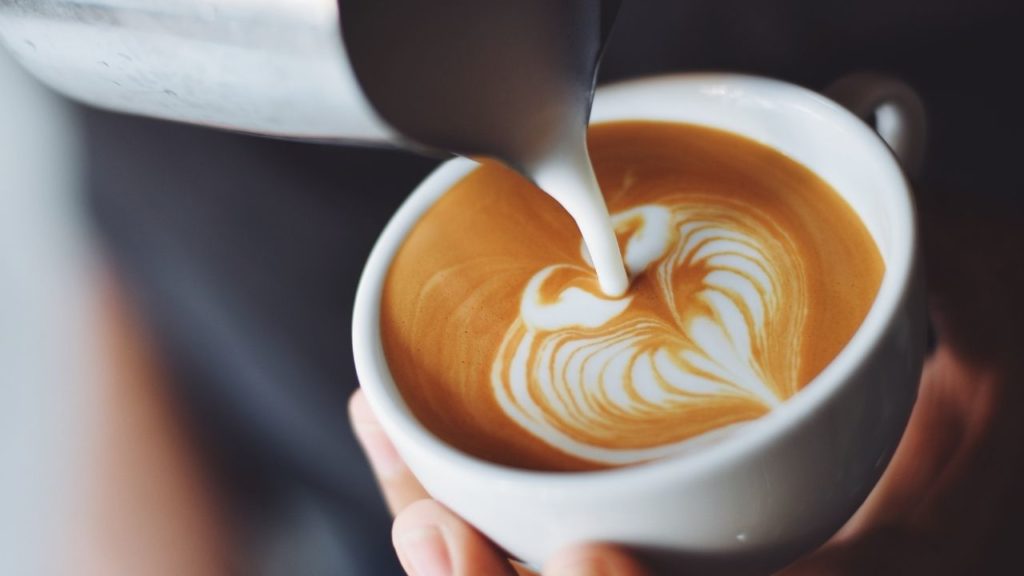Before getting to the heart of the matter and discussing the latte , I would like to tell you about the americano… Do you know the history of the americano? It is a drink created for (or by) Americans during World War II. Accustomed to long, low-concentration coffees, American soldiers could not drink the espressos served to them by the Italians. Hot water was then added to dilute it all.
If I tell you this, it's because for the latte , it's the same thing! In order to enjoy the espresso they were served, Americans also sometimes asked to add hot milk to their cups. This would be how the latte we know today was born.
The latte: much more than a coffee with milk
The traditional café au lait that many French people love so much is not really the same thing as a latte. In fact, coffee with milk is normally prepared from a base of filter coffee, in which milk (often cold) is added.
The latte, on the other hand, is prepared from an espresso . Steamed milk is added to it, which contains micro air bubbles. This is called a milk microfoam.
While the café au lait falls rather flat, the latte offers more texture in the mouth. It is softer and smoother than a filter coffee to which milk is added.

This is explained first by the espresso base whose body is thicker than a filter coffee, but also by the texture of the milk froth . Since air is added to texturize the milk, it thickens slightly and becomes more palatable.
The feeling in the mouth is generally rounder, softer and smoother .
The recipe for this coffee
As we have seen, the latte consists of espresso and microfoamed milk . But it's not the only drink that uses these two ingredients.
Indeed, on a coffee shop menu, you will also find cappuccino, flat white or macchiato. All of these drinks feature milk or milk froth and an espresso base. Yet each of them does not have the same taste, nor exactly the same texture.
To make a real latte, it is necessary to follow precise ratios. Thus, the base of a latte is considered to be a shot of espresso . We therefore count between 30 ml and 60 ml of coffee depending on the coffee shops. And yes, although there is a basic recipe, coffee shops and baristas adapt according to their way of working, their habits.
Then, we add to this espresso, a quantity of milk which varies between 175 and 200ml. This milk must be heated using a steam nozzle .

When heating the milk, care must be taken to bring in the micro-bubbles of air which will create the texture of the latte that we know. This is where the barista's experience is important, because the milk should not thicken too much, at the risk of ending up with a drink that looks more like a cappuccino. But it is also necessary to take care to bring in enough microbubbles of air to obtain a sufficiently unctuous texture.
Here, I am talking about microbubbles, because normally no bubbles should be visible once the milk is ready, or the latte is made in a cup.
The latte art
I'm not going to dwell on the subject here since I've already written an entire article on latte art . But I think it's still important to give you a little background on this practice that we like to meet so much in a coffee shop .
Latte art is the act of drawing shapes in a cup of coffee, thanks to the milk that is poured into it. This milk has micro air bubbles which are perfect for this.
Latte is the ideal drink for making latte art. This is probably why this technique is called “ latte art ” and not “cappuccino art” 😅

In fact, the texture of the milk, smooth, unctuous and not too thick, is perfect. It allows the milk to mix perfectly with the coffee when the pitcher is a good distance from the cup. The espresso and its crema are then confused with the milk froth.
However, when you bring the jug of milk closer, the microbubbles in the milk allow it to “float” on the surface. White traces are then obtained on the surface of the coffee. With the right techniques and a lot of practice, you can pull off some amazing ephemeral mug works!

